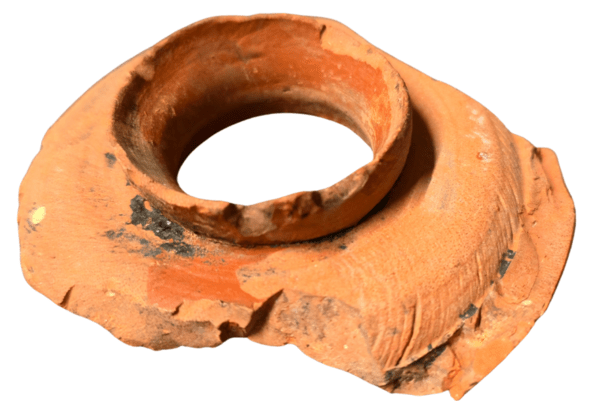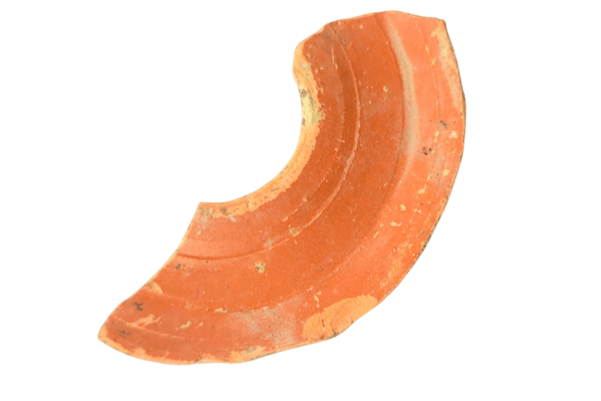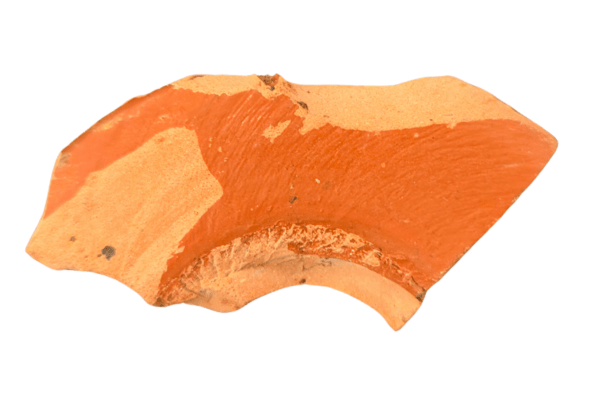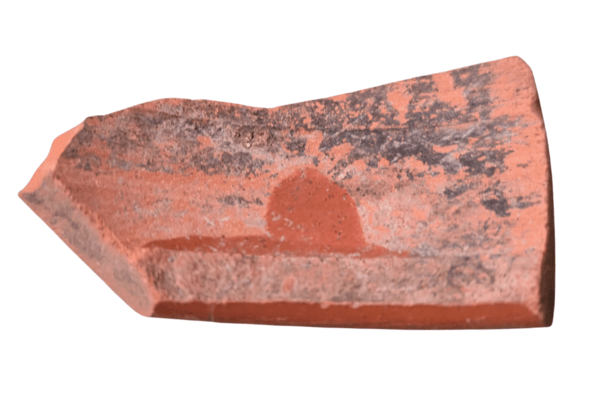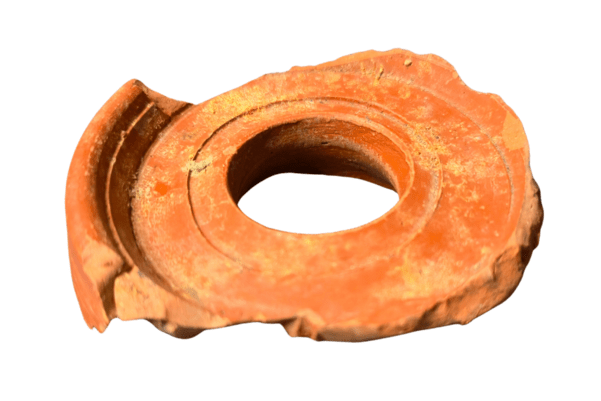Ink-redible finds from Roman Southwark
Our excavations ahead of The Liberty development in Southwark have revealed a wealth of Roman archaeology which has made headlines across the world. In our latest blog, MOLA Senior Roman Pottery Specialist Charlotte Burn explores evidence for writing and a possible administrative presence on and around the site.
The site of The Liberty isn’t a stranger to being dug up! Excavations in the northern area, along Southwark Street, took place between 1980 and 1986. The findings from these excavations have been published in a LAMAS article in Transactions vol.43 (1992) titled ‘A possible mansion in Roman Southwark: Excavations at 15-23 Southwark Street 1980-1986’.
One pottery object found during both our excavations and those in the 1980s, are Samian inkwells. These are not the most common Samian objects – usually we find cups, bowls and dishes or plates. This means Samian inkwells are a significant find in pottery assemblages from Roman Londinium and Southwark. Samian inkwells are associated with the use of carbon ink, which was made from ground charcoal, on wood leaf tablets. This is a method of writing which we think was widely available at the time - and cheaper than other writing technology.
These inkwells were made in Gaul (modern day France) and imported into Roman Britain through port towns such as Londinium. We uncovered sherds from five Samian inkwells during our recent excavations at the Liberty - and some still have ink-staining on the inside.
One of these fragments also has at least three ‘X’s in a row scored into the external surface. While graffiti on Samian ware is not unusual, graffiti on an inkwell is.
This carving was done after the vessel was fired. We know this because the marks cut through the slip, which the pot was dipped into before firing. Graffiti ‘X’s are sometimes thought to be ownership marks, possibly from people who were illiterate. However, that would make this particular graffiti quite ironic, as it is scored onto a piece of equipment associated with writing.
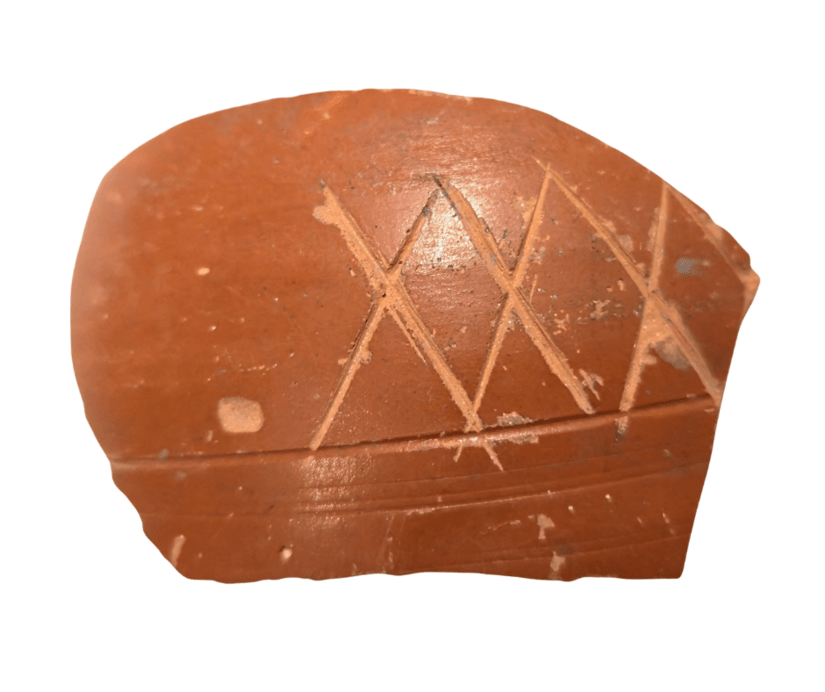
Other interpretations include that the 3 ‘X’s represent the number 30 in Roman numerals (although the piece is broken near the graffiti so there may have been more!). Perhaps this was a way of counting three sets of ten, or maybe someone was counting how many inkwells they had handed out, so they knew to collect the same number back in! Inkwell distribution across Londinium suggests that ink writing in the late 1st and early 2nd centuries AD was fairly widespread. This might make the interpretation of the number 30 – or higher – more likely.
The excavations here in the 1980s uncovered 15 Samian inkwell sherds. At the time, the specialist noted this as an unusual number and suggested it may indicate clerical activity or similar taking place on the site. After our recent excavations we now have a total of 21 Samian inkwell fragments - a substantial number for a single site!
What is particularly interesting about the presence of the Samian inkwells, is that they were not the only vessels associated with writing found at The Liberty. We have also recovered are the lids or tops of at least three copper-alloy inkwells, which broadly date to between the 1st – 3rd century AD.
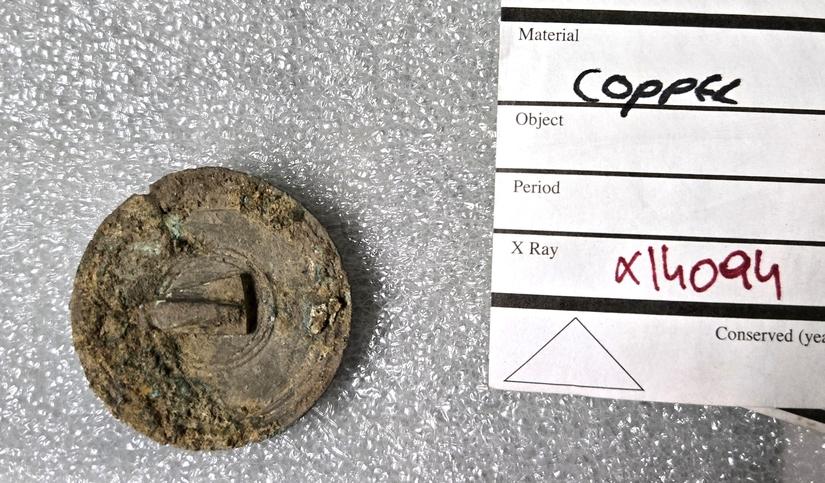
There were also three sherds from two glass inkwells. As discussed in one of our previous blogs, the glass used to make one of them comes from Northern Egypt.
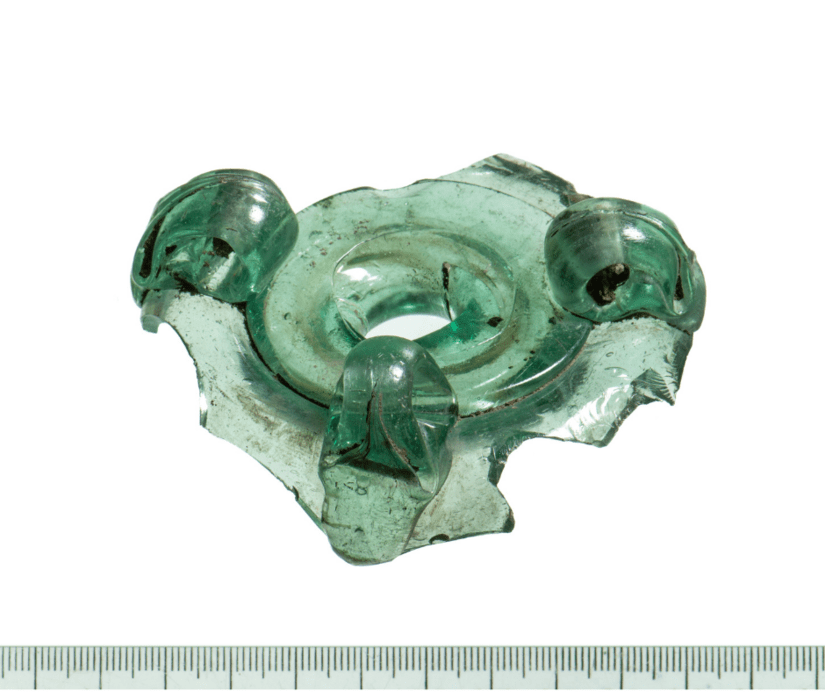
However, despite all the evidence of inkwells, we only discovered a single stylus (the utensil for dipping in ink and writing with) on the site – perhaps they were using something else to write with which haven’t survived?
A possible procuratorial stamp
Another possible indicator of administrative influence at The Liberty site is the potential presence of procuratorial stamps. Procuratorial stamps were a way of showing official involvement, for example on the brick or tile of a building to show it was linked to the administration, or the Procurator of Londinium who dealt with the city’s finances.
Unusually, however, our stamp is on the rim of a mortarium. This distinct Roman vessel type was a kitchenware mixing bowl with a gritted or roughened interior for grinding and a spout for pouring. They are often found with burning or soot marks, so may have had another purpose as well as being used in food preparation.
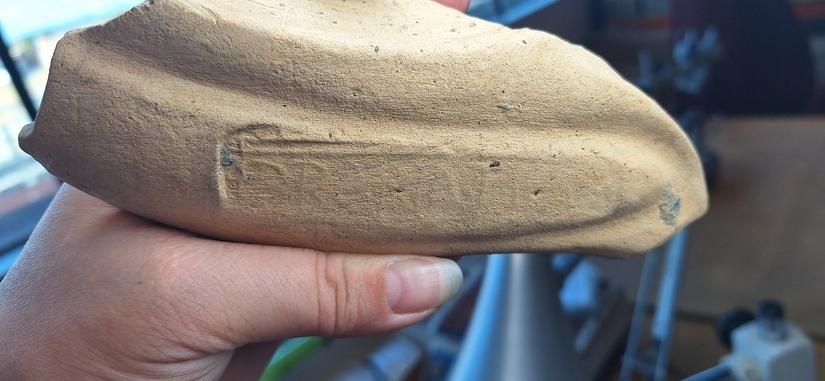
Mortarium stamps themselves are quite common finds in London, as potters often stamped their names on their vessels, sometime twice or with the word ‘fecit’ meaning ‘made by’. But to find a procuratorial stamp on a mortaria is very rare as they are uncommon in Roman London pottery assemblages.
We don’t yet know if they indicate an administrative link to the potter, the vessel, or the area in which the stamped vessels are found, but this is the second uncovered during MOLA excavations in Southwark – the other comes from nearby Union Street.
These few finds add to previous indications that there was potentially something official or clerical going on in this area of Southwark and we are really excited to delve deeper into this evidence and see what we find!
Archaeological investigations at The Liberty are being carried out by MOLA on behalf of Landsec, Transport for London (TfL), and Southwark Council.
